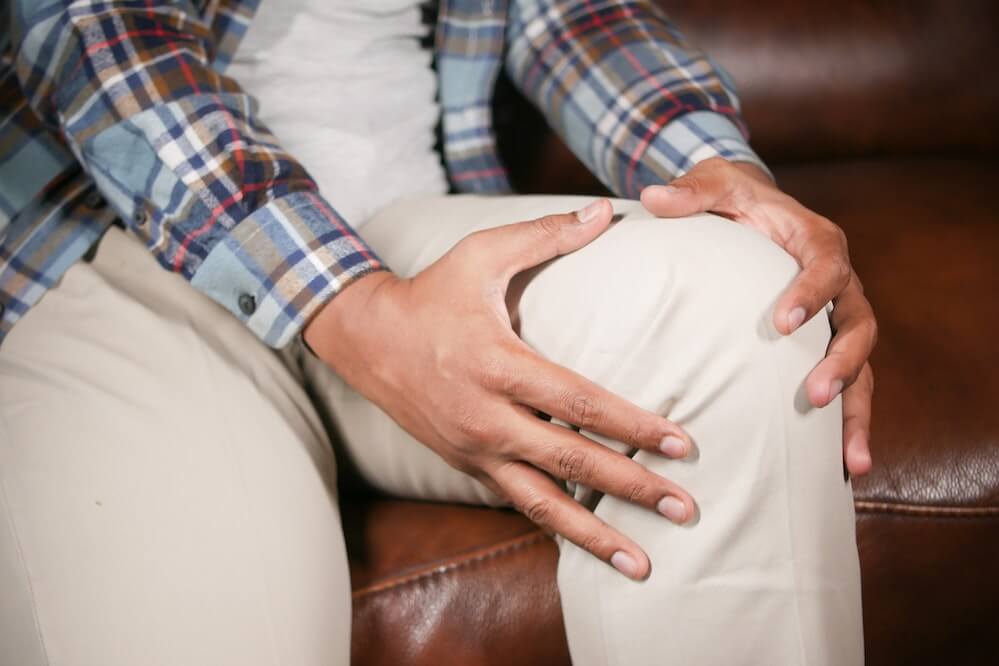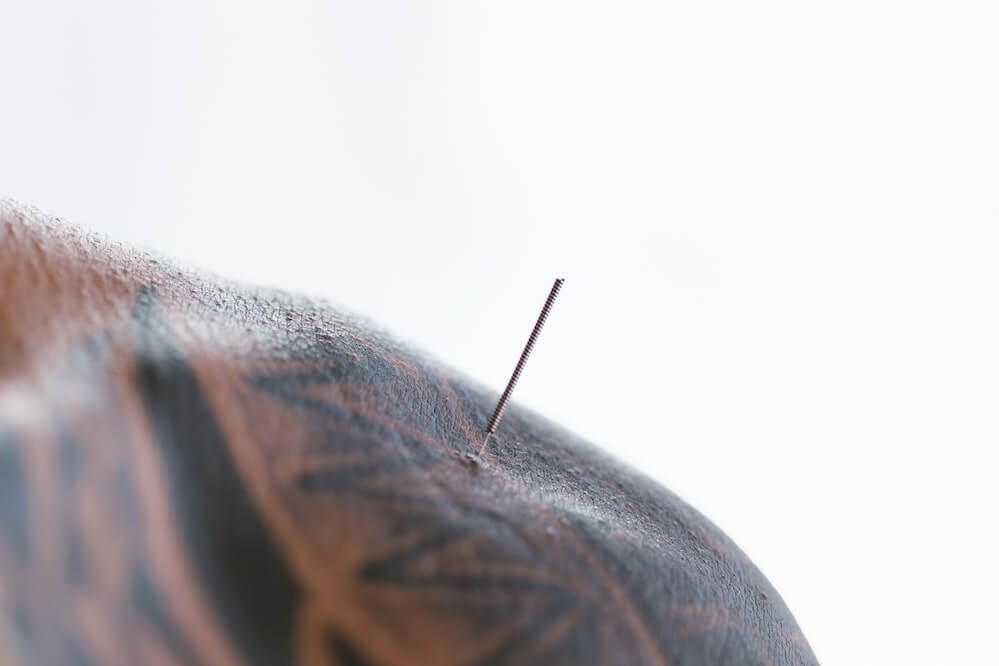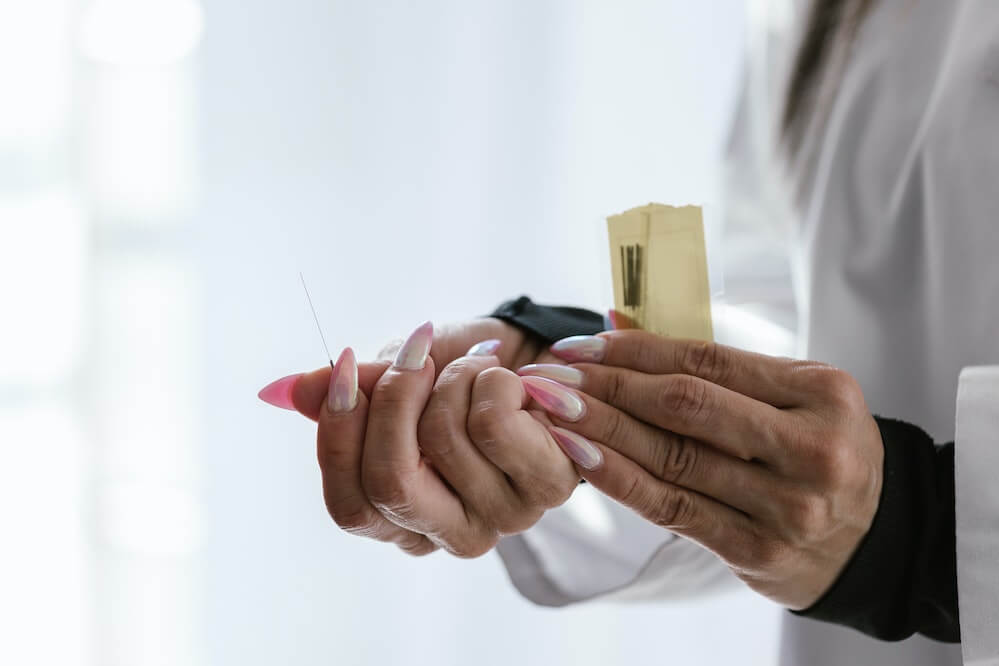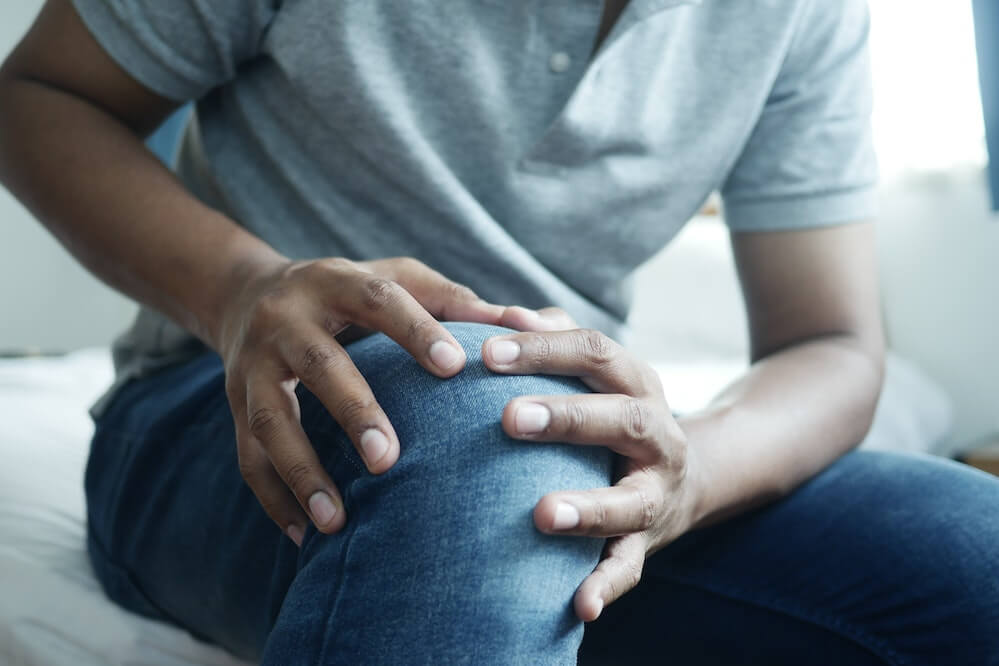Knee pain can affect adults of all ages and can be a result of aging, injuries, sports, and daily activities (bending, standing, walking, and lifting). Some common symptoms that accompany knee pain are:
- Weakness or instability
- Swelling
- Stiffness
- Popping or crunching noises
- Redness and warmth to the touch
- Inability to fully extend the knee
While opioids provide instant pain relief, long-term usage can have potential side effects like heart, circulation, liver, and kidney issues. Therefore, you can turn to alternative medicine, such as acupuncture, to relieve knee pain without experiencing side effects.
If you’re researching acupuncture for knee pain and want to know what the acupuncture points for knee pain are, how many sessions of acupuncture you need, and how long it lasts, stay with us as we unveil each question.
Causes of Knee Pain
The anatomy of the knee consists of the tibia (shinbone), femur (thighbone), and patella (kneecap), with a layer of cartilage covering each bone end. The cartilage is important as it absorbs shock and protects the knee. Other important parts are the tendons and ligaments; tendons are fibrous, tough cords of tissue connecting muscles to bones, whereas ligaments are elastic bands connecting bone to bone.
Common knee problems can come from aging, mechanical problems, stress on the knee joint (arthritis), or injuries.
- Mechanical problems: Knee pain can come from mechanical problems such as a loose body (a piece of bone or cartilage floating into joint space), Iliotibial band syndrome, dislocated kneecap, and hip or foot pain.
- Arthritis: Though there are more than 100 different types of arthritis, those most likely to cause knee pain are rheumatoid arthritis, osteoarthritis, pseudogout, gout, and septic arthritis.
- Injuries: Knee injuries can affect ligaments, tendons, or fluid-filled sacs (bursae). Some common knee injuries that can cause pain are tendonitis, sprains and strains, torn ligaments, fractures, ACL injuries, knee bursitis, patellar tendinitis, and torn meniscus.
Numerous factors can increase the risk of having knee problems, such as :
- Certain sports: This includes sports that put greater stress on your knees, like alpine skiing and basketball.
- Specific occupations: Jobs that require a lot of bending, crouching, lifting, standing, and stair climbing can put repetitive tension on knees and risk knee pain.
- Previous injury: Unfortunately, having a prior knee injury makes you more likely to injure it again.
- Excess weight: Being overweight increases stress on your knees, even for daily activities like walking and going up and down the stairs. It can also accelerate the breakdown of joint cartilage, thus increasing the risk of osteoarthritis.
How Can Acupuncture Help for Knee Pain?
According to Traditional Chinese Medicine, knee pain comes from external factors like wind, dampness, cold, and heat affecting the knee joints. These factors block the life force or qi and blood flow in channels (meridians), classified as:
- Kidney essence deficiency – shows as tinnitus, limited knee movements, and dizziness.
- Yang cold stagnation – manifests as stiffness, pain, and reduced knee function.
- Blood stagnation – shows signs like limited motion range, a dark face, purplish lips, and fixed pain.
Acupuncture needles send signals to the nervous system (brain and spinal cord) to release endorphins, alleviating pain. It also helps control levels of cortisol, thus decreasing inflammation. This way, through acupuncture, you can allow the free flow of qi, reduce pain and swelling, promote blood flow, and loosen muscles.
Other than traditional acupuncture, some of the acupuncture styles that your acupuncturist can use for knee pain are:
- Auricular acupuncture (or ear acupuncture): This style works because various acupuncture points in the ear correspond with different body parts. Stimulating specific points in the ear can help prevent and treat disease, including alleviating knee pain.
- Electroacupuncture: It is another effective acupuncture style for knee pain. This technique uses a small current between two needles to relieve pain.
Knee pain can impact the quality of life, affect sleep, reduce mobility, and prevent doing daily activities smoothly. Fortunately, you don’t have to live with constant pain, as acupuncture has proven benefits for reducing pain. Some of the benefits of acupuncture for knee pain are:
- Promoting blood circulation: acupuncture can improve blood flow to the knee joint, thus helping the healing process.
- Reducing inflammation: Increased blood flow helps pull out toxins and fluid buildup and brings platelets and red blood cells, which reduce inflammation.
- Releasing endorphins: Acupuncture aids in releasing endorphins, known as the feel-good hormones, which help reduce pain.
- Loosening tight muscles: Acupuncture helps loosen muscles and release trigger points that can limit mobility and cause pain.
Acupuncture has minor risks, with common side effects being soreness, bruising, or bleeding at the point of needle placement. Other less common side effects include dizziness, increased pain, or nausea. Keep in mind that acupuncture is not advisable for the following:
- Pregnant females or those who plan on getting pregnant.
- People who use pacemakers for heart conditions.
- People who have blood disorders or use blood thinners.
Acupuncture Points for Knee Pain
Traditional Chinese Medicine recognized 361 acupuncture points in the body, with studies indicating that acupuncture works by stimulating specific central nervous pathways.
The key acupuncture points for relieving knee pain are:
- Three Mile Point or Stomach 36 (ST36): located outside the shinbone and below the kneecap.
- Shady Side of the Mountain or Spleen 9 (SP 9): found below the kneecap in the hollow of the inner leg.
- Sunny Side of the Mountain or Gallbladder 34 (GB 34): located at the top of the shinbone and at the bottom of the kneecap.
- Crooked Spring or Liver 8 (LV 8): positioned at the inner parts of the back of the knees.
- Dubi or Stomach 35 (S 35): situated on the outside border of the middle of the back of the knees.
- Weizhong or Urinary Bladder 40 (UB 40): found in the midpoint of the back of the knees.
How Many Sessions of Acupuncture Do You Need for Knee Pain?
Unfortunately, we can’t give a specific answer as the number and frequency of acupuncture sessions depend on the condition, severity of the pain, and the response shown by the patient. Your acupuncturist may recommend treating you once or twice a week during the course of several weeks or months.
How Long Does Acupuncture Last for Knee Pain?
Although acupuncture is a highly effective treatment, its effects vary from person to person. Some people may not experience benefits after acupuncture; others may only see short-term effects. However, data collected from 20 studies show that people suffering from various painful conditions, including osteoarthritis, experienced the benefits of acupuncture from a few months to a year after treatment.
Conclusion
Acupuncture has numerous benefits and very few risks. In a world where alternative medicine is becoming more popular and has proven to be effective with almost no risks, acupuncture for knee pain can be what you’re looking for to alleviate pain and improve your quality of life.
If you’re on the other side and want to help people find a better way of living, consider furthering your education as an acupuncturist. Check out our Acupuncture Master Degree Program, where you’ll learn about acupuncture diagnosis and treatment, diagnostic techniques, restoring health, and preventing disease from a holistic approach.



